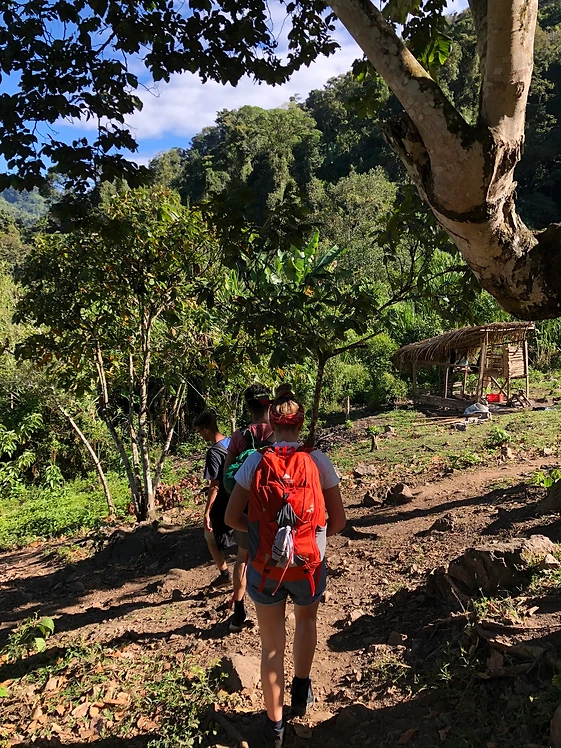A place at the end of the world
- Vanessa Einsiedler
- Jul 27, 2020
- 4 min read
Imagine you are far away from civilization. The nature around you is untouched, mountains and valleys are overgrown with trees. Through the deep valleys, rivers wind which seem endless. The hills are illuminated by the hot sun. Chickens, pigs and even horses run free and seem to have no owner. In the surrounding area you can see isolated standing wooden and tin huts. There are also people here, few in number, and they don't seem to notice you at all. Besides, the words they change are incomprehensible. They seem to know their daily routine by heart and follow it. A bit further on - on a small hill - a few children are playing with a broken ball. They are laughing and romping but as you approach them, they fall silent and look at you with a mixture of curiosity and fear. You try to explain to them that they do not have to be afraid but they do not understand your language. So you start to kick the ball through the air and soon the first children dare to play along, words are not needed.
At the beginning of March I set off with a small group of Germans, Americans and Costa Ricans to the jungle, where the Cabeckas live, a small group of indigenous people. Roland (an American I met in Costa Rica) had invited me and four other teenagers to accompany him. He had already been to this remote part of Costa Rica several times. It is his vision to build up a small medical care centre for the indigenous population in the middle of the jungle, as the next hospital is a 2.5 hour walk and a subsequent 3 hour bus ride away. Several times groups of volunteers have been allowed to accompany Roland to the Cabeckas, mostly for several days or weeks to help him build his house. This time it was just to check the situation and plan the next steps.
So the trip started with a 2.5 hour drive, enough time to get to know the small group - with whom I would spend the weekend. Afterwards we went on an equally long hike, non-stop downhill in the blazing sun. The nature around us was breathtaking, but when the first wild horse came running towards us on the narrow path, I was a little frightened. Close to our destination, we had to cross a river over which the Cabeckas (the indigenous population) had built a wire rope hoist. Someone came to help us and brought us safely to the other side of the river. On the rest of the way, we saw some huts, which were mostly made of wood and had smoke coming out of their roofs. We passed a small school which Roland and other volunteers had painted last year. As far as I could see, this was the only house that was painted at all. A short time later we arrived in the hut in which we would spend the night. We had brought our own sleeping bags and in the inner and only room there were foam mats, which turned out to be more comfortable than they looked. After we had put down our backpacks, we wanted to explore the surroundings. Beside ours there were two more houses and even a small church, so I figured that this place was probably the center. The church looked differently to the ones I knew, which are big, made from stone with a church tower and a huge clock. This church was made of corrugated iron and inside there were benches and an altar made of wood.
After we had played a little with the younger children, a few teenagers joined us, who to our astonishment also spoke Spanish. Their mother tongue is Cabecka and they only learn Spanish at school. One of the teenagers told us that he is studying at the university in the town nearby.

It was very nice to learn something about their culture and to learn a few Cabecka words. After dinner, which we had brought with us and a short shower with ice-cold mountain water a service was held in the church. Although I didn't understand much of what was being said, the atmosphere was very nice, as there was singing and dancing. After the service the adults left the church and we also wanted to leave, but several young people started to rap, which quickly developed into a rap battle and of course invited us to stay. After the evening ended with some guitar strumming, we were drawn to our sleeping bags.
The following day we left early to avoid the midday heat. Because the route, which was downhill the day before, had to be walked steeply uphill today. And yes, it was really steep. At the top we rewarded ourselves with ice cream and our small group went to eat something together. Both our group of volunteers and the indigenous children have grown very close to my heart in this short time and I hope to see them all again soon.


























Comments